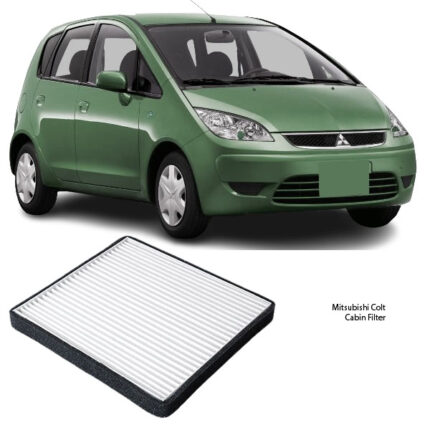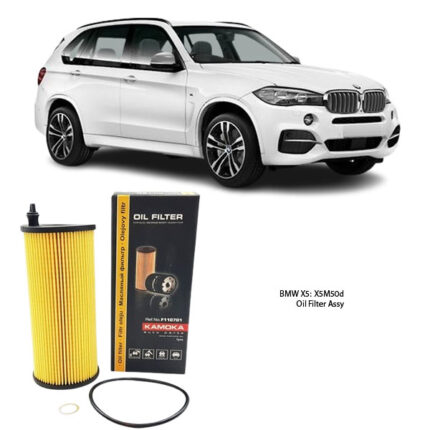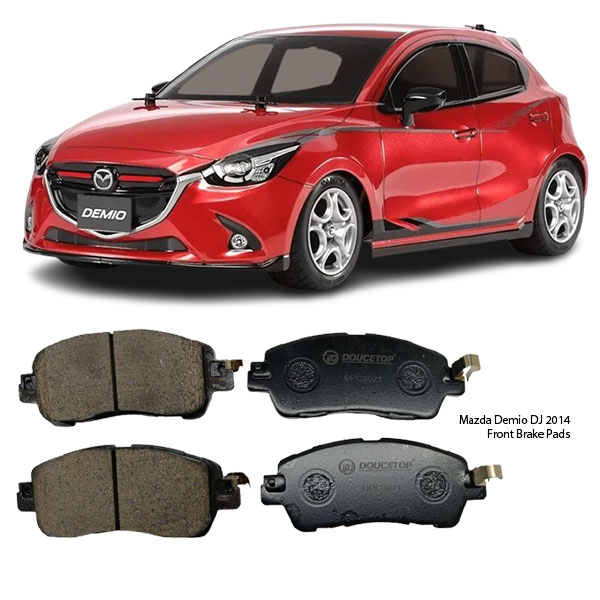-14%
Get Mazda Demio DJ 2014 Front Brake Pad Kit DPC3021 in Kenya
When it comes to stopping, control isn’t a luxury — it’s everything. Whether you’re navigating tight spaces, avoiding hazards, or simply cruising through daily life, the ability to stop safely and instantly is non-negotiable. Behind every smooth, confident stop is a component that works tirelessly in the background: the Front Brake Pad Kit.
It may not be flashy, but this kit plays a critical role in safety, responsiveness, and peace of mind every single time you engage the brakes. Let’s explore the mechanics, the materials, and the magic of this underrated hero.
1. What Is a Front Brake Pad Kit? 🧱⚙️
A Front Brake Pad Kit includes all the essential components required to replace the front brake pads — which are the friction elements responsible for slowing down and stopping the forward motion.
A typical kit includes:
-
✅ A pair of brake pads (for both sides of the rotor)
-
✅ Anti-rattle clips or pad shims
-
✅ Lubricant or grease (sometimes)
-
✅ Wear sensors (on some models)
These pads are mounted inside brake calipers, and when you apply pressure, the caliper squeezes them against the brake rotors (discs) to create friction — which slows the system down. 🔥🛑
Front brakes handle the majority of the stopping power due to weight distribution during braking — that’s why the front pads typically wear out faster and need regular checks and timely replacement.
2. The Anatomy of a Brake Pad 🧬🔍
Each brake pad is a combination of high-performance layers designed for durability, heat management, and smooth operation. Let’s break it down:
🟤 Friction Material
-
The face of the pad that makes contact with the disc.
-
It wears down over time and is made from different compounds depending on performance needs.
🟫 Backing Plate
-
A solid steel plate that provides structure and ensures even pressure across the pad.
🟪 Shim
-
A thin metal or rubber layer that reduces noise and vibration during braking.
🟧 Insulation Layer (optional)
-
Helps prevent heat transfer to the rest of the braking system, minimizing fade and prolonging lifespan.
Together, these elements make a brake pad resilient under stress, consistent in performance, and dependable when it matters most.
3. How It Works: A Dance of Friction and Force 🩰⚡
The function of brake pads is rooted in friction physics. Here’s how it goes down:
-
You apply the brakes.
-
Hydraulic or electric pressure pushes the caliper pistons.
-
The pads squeeze against the spinning rotor.
-
Friction generates heat and resistance.
-
Forward motion slows or stops.
This all happens in split seconds — and it must be silent, smooth, and strong every time. Brake pads convert kinetic energy into thermal energy, and that heat must be managed to avoid loss of performance (brake fade).
4. Types of Brake Pad Materials 🧪🔧
Depending on performance needs, environment, and vehicle design, brake pads come in different materials:
🌿 Organic (NAO – Non-Asbestos Organic)
-
Made from natural fibers, resins, and fillers.
-
Soft, quiet, and low-dust.
-
Ideal for everyday driving, but wear faster.
🧱 Semi-Metallic
-
Contain metal fibers for strength and heat resistance.
-
Great stopping power under stress.
-
Can be noisier and produce more dust.
🧊 Ceramic
-
Made from fine ceramic compounds and copper fibers.
-
Very quiet, long-lasting, and low-dust.
-
Excellent heat management and smooth operation.
Each material offers a unique balance of performance, comfort, and longevity. The right choice depends on how and where the system is used.
5. Benefits of a Fresh Front Brake Pad Kit 🌟🔐
Replacing your front brake pads on time isn’t just maintenance — it’s preventive safety, system efficiency, and driver comfort all wrapped in one.
Here’s what a new kit brings:
✅ Shorter stopping distances
✅ More responsive pedal feel
✅ Reduced brake noise and vibration
✅ Better protection for your rotors
✅ Lower risk of overheating or brake fade
✅ Improved overall driving experience
Neglecting worn pads can lead to metal-on-metal grinding, warped rotors, and costly repairs. Staying ahead of wear saves time, money, and potential risk.
6. Signs You Need New Front Brake Pads ⚠️🔍
Worn brake pads don’t always shout — but they do whisper. Here’s what to watch out for:
-
🔊 Squeaking or squealing sounds
-
🥁 Grinding noises (especially metal-on-metal)
-
🦶 Longer stopping distance
-
⚠️ Brake warning light
-
🚫 Reduced pedal responsiveness
-
👀 Visible pad thickness below 3mm
-
📈 Vibration during braking
When these signs show up, it’s not just about comfort — it’s about safety and system protection.
7. Installation Tips & Best Practices 🧰🛠️
Whether done by a professional or an experienced DIYer, replacing brake pads involves precision and caution:
🧼 Clean the calipers and mounting points
🔧 Use high-temp grease on contact areas
🧷 Install new clips and shims if included
📐 Check rotor condition — replace or resurface if worn
⚙️ Torque bolts correctly to spec
🚗 Perform a bedding-in process for even pad wear
Pro tip: After installing new pads, avoid heavy braking for the first 100 km to allow proper bedding. 🌡️🛑
8. Environmental and Performance Impact 🌍🔥
Modern braking systems — especially those using ceramic or copper-free pads — are designed with environmental safety in mind:
♻️ Reduced heavy metal content
🌱 Less dust pollution on roads and wheels
🌡️ Better heat dissipation to improve performance
🔄 Longer pad and rotor life, reducing waste
Efficient braking isn’t just safer — it’s greener and more sustainable. 🚀🌎
9. Selecting the Right Front Brake Pad Kit 🛒🎯
Choosing the perfect kit is key to reliable, quiet, and smooth performance. Here’s what to consider:
✔️ Material type — ceramic for quiet + longevity, semi-metallic for power
✔️ OEM compatibility — always match design specs
✔️ Noise-reducing features — shims, slots, chamfers
✔️ Included hardware — clips and sensors save time
✔️ Brand reputation — go for proven, tested quality
A good kit should be easy to install, resistant to wear, and engineered for your conditions.
10. Final Word: Silent Strength in Every Stop 🛡️🛑
The Front Brake Pad Kit might not be flashy, but it’s absolutely critical. It’s the quiet guardian that transforms momentum into control, chaos into calm. Whether you’re gliding to a stop or halting on a dime, these pads ensure every stop is precise, predictable, and safe.
They work hard in the heat. They stay silent under pressure. And they ask for very little — just timely care and occasional renewal.
So the next time your brakes feel smooth and sure, know there’s a layer of expertly engineered friction doing its job, one stop at a time.
Follow us on Facebook for more parts.




Reviews
Clear filtersThere are no reviews yet.